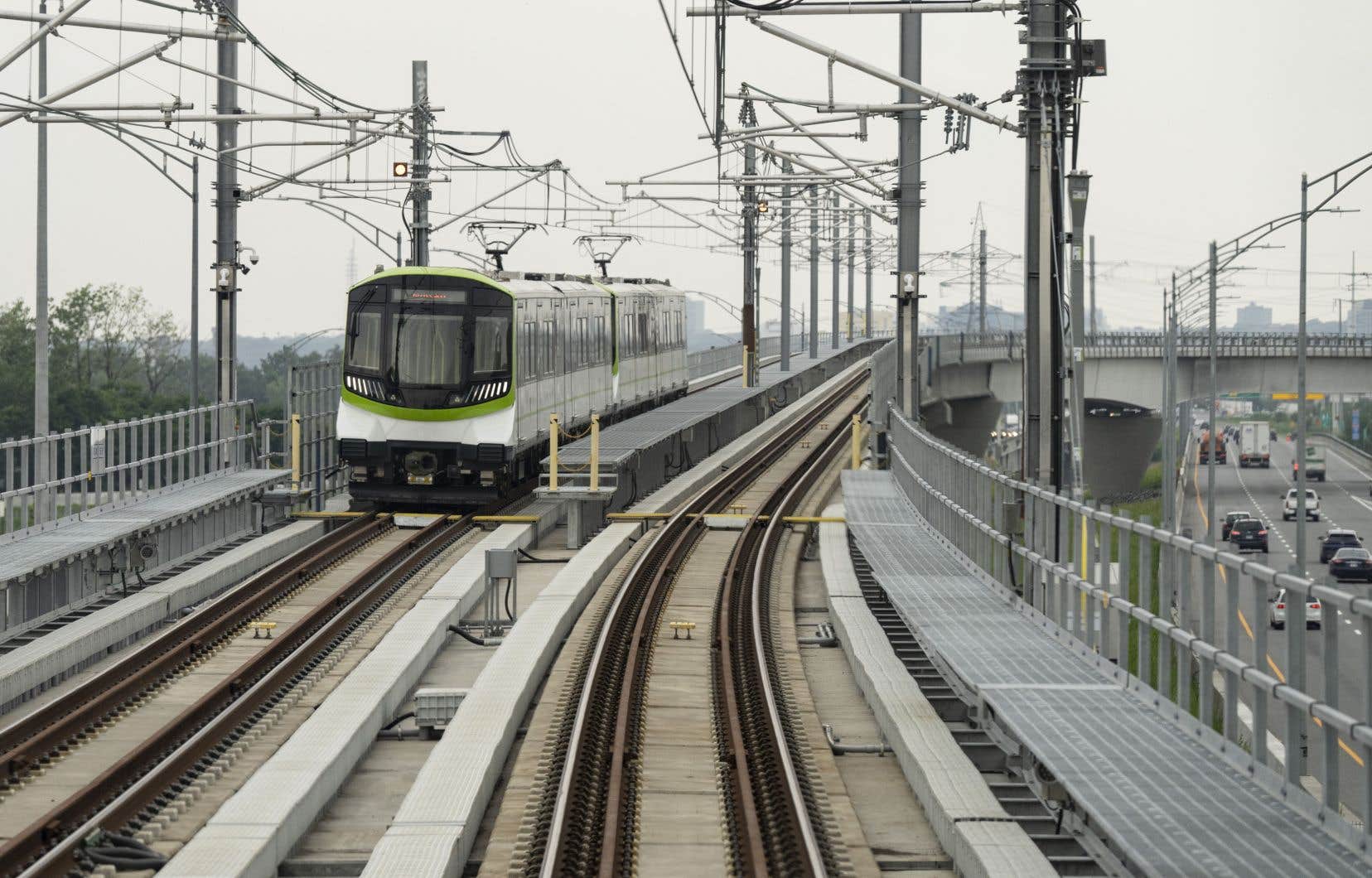Following the outage that paralyzed the Réseau express métropolitain (REM) on Wednesday evening, CDPQ Infra cannot explain why the power supply could not be quickly restored. At no time was the safety of passengers stuck for two hours in a train stopped on the Samuel-De Champlain Bridge jeopardized, however, assures the subsidiary of the Caisse de dépôt et placement du Québec.
CDPQ Infra attributes the problems that occurred Wednesday evening as the storm with strong winds raged to a fluctuation in the electricity supply. To protect against these fluctuations, circuit breakers cut off the power supply to the REM network. “We tried to restart the equipment and that’s when it took longer than we expected. We are trying to understand [ce qui s’est passé] », explained Francis Labbé, from the media relations department of CDPQ Infra, on Thursday. “This is not the first time that there has been an outbreak [des disjoncteurs], but this is the first time that we have had so much difficulty bringing back the equipment. »
Three trains were on the tracks at the time of this service interruption around 7:10 p.m. One of the trains, stopped near Du Quartier station in Brossard, was quickly evacuated. Users of the second train, stopped near Pointe-Saint-Charles, were able to leave the scene via the emergency staircases.
The third train, which interrupted its journey on the Samuel-De Champlain Bridge with around sixty passengers on board, however remained on site for several hours. “Taking people out of that train with 90 km/h winds was not a good idea at all for their safety. Especially since we spent part of the night removing debris, metal and plastic plates, which had fallen on our rails,” argued Francis Labbé. “We therefore chose to ask people to stay in the wagons. I think it was the decision to make in context. »
Mr. Labbé, however, assures that CDPQ Infra was in constant communication with users. “There were messages sent every three minutes to people who were on the trains,” he said. “There were response officers who were in contact by intercom and employees were available to answer spontaneous questions. »
“We kept in touch with users, which allowed us to see that there was no one who was in a crisis situation. Otherwise, we would have reacted differently,” he added. “But we agree, it’s deplorable. We understand that it is really not interesting to be stuck for two hours, in strong winds, on the bridge in a train whose battery is weakening due to lack of power. »
All REM trains are equipped with a battery, but due to a lack of electrical power, that of the train stopped on the bridge weakened and the heating stopped working.
After multiple attempts to restore power supply, authorities finally decided to send another train to pick up the hapless commuters. The service did not resume in the evening. “In the circumstances we had yesterday, restoring normal service was not the priority. The priority was the safety of the people who were on the train,” says Mr. Labbé.
The REM has suffered several breakdowns since it came into service last July. Last January, after a series of breakdowns, REM users complained about repeated service stops and denounced the exclusivity granted to the REM on the Samuel-De Champlain bridge, which means that buses can no longer travel there and their travel time has increased for many of them.
In the wake of these difficulties, the Minister of Transport and Sustainable Mobility, Geneviève Guilbault, warned that corrections would have to be made to the REM service. “To cause a modal shift, our public transport networks must work,” she declared. “The problems encountered over the past six months must be taken seriously and we must ensure that users are well informed. It is imperative that the system improves. »
